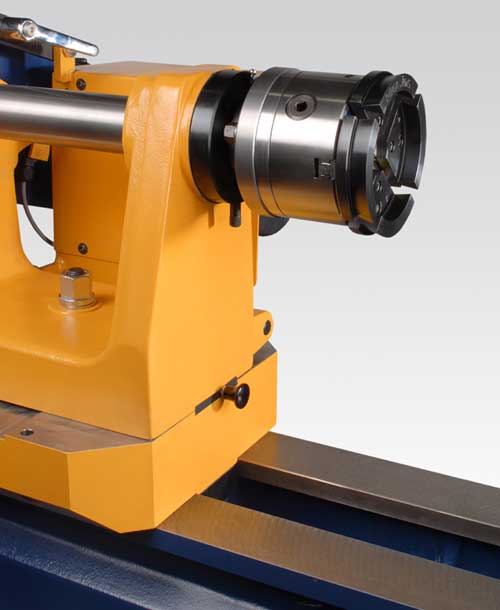 TIP HEIGHT AND WIDTH
TIP HEIGHT AND WIDTH
The most important technical data of a lathe are the center height and center distance, i.e. the distances between the driver tips and the bench bed and each other. You determine the size of the blanks, which can be machined on the lathe. Machines with are sufficient for smaller workpieces 75 mm Spitzenhöhe (= 150 mm Drehdurchmesser). If larger parts are to be processed, is a lathe with 200 mm center height makes sense. The same goes for the peak distance. at only 400 mm center distance, no long wooden rods can be turned for the banister. However, it is perfectly adequate for crosswise wood turning and for short workpieces. devices with 100 cm top width, on the other hand, can be used in many different ways. Engine power and center height of a lathe must match. Enough for a mini lathe 350 to 500 Watt, so should at 200 mm center height at least 700 watts to be available.
As a rule, lathes are equipped with several speed levels. Four speed levels are perfectly adequate for most jobs. Be careful though, how difficult it is to change from one speed to another, usually a belt has to be put on for this purpose. Stepless speed control can only be found on expensive models. However, it allows a very fine adjustment of the speed, which is particularly useful when turning crosswise wood, since larger workpieces often have to be turned at low speeds first, before they can then be turned into shape at higher speeds.
A three-phase motor has more torque than 230-volt motors. If you have three-phase current in the house, you should therefore prefer a three-phase model. The superstructure should be just as solid and solid as the bed of the lathe. These are the headstock, the tailstock and the tool rest.
LATHE CHUCK
The right lathe chuck is important for a smooth run and thus for a good result. The basic equipment of the machine includes the so-called driving center and a rotating center on an adjustable tailstock. This is used to make wooden parts, who are long and thin (Langholz)
and rotated between two points.
A universal feed is recommended for this, which was specially developed for turning transverse wood: Spann- and spreader lining with swallows- tail-shaped attachments. They clamp the wood more securely than simple jaw chucks and thus reduce the risk of injury. It is best to choose a chuck with a large clamping range, which can be operated with a key. Spanner foot, which consist of many individual parts, which are exchanged depending on the clamping range, are impractical.
TURNING TOOLS
Finally, of course, you still need the right tool. Here, too, one should orientate oneself to the demands of the professionals and rather less, but buy better tools.
A roughing gouge is part of the basic equipment for long wood turning, a standard form tube and a small form tube for narrow profiles. You'll also need a large turning chisel, a small turning chisel, a woodturning scraper and a parting tool.
Fewer tools are required for cross-wood turning. A standard wooden tube and a small wooden tube as well as two woodturning scrapers of different widths are often sufficient here. Razor-sharp tools are important for good turning results. A bench grinder for regrinding is therefore part of the equipment. You will also need a whetstone to remove the sharpening burrs. A wet grinding machine with a leather honing wheel is even better and more practical. Since there is hardly any danger when turning, that the cutting edge burns out, the sharpness of the cutting edge is retained for a long time.